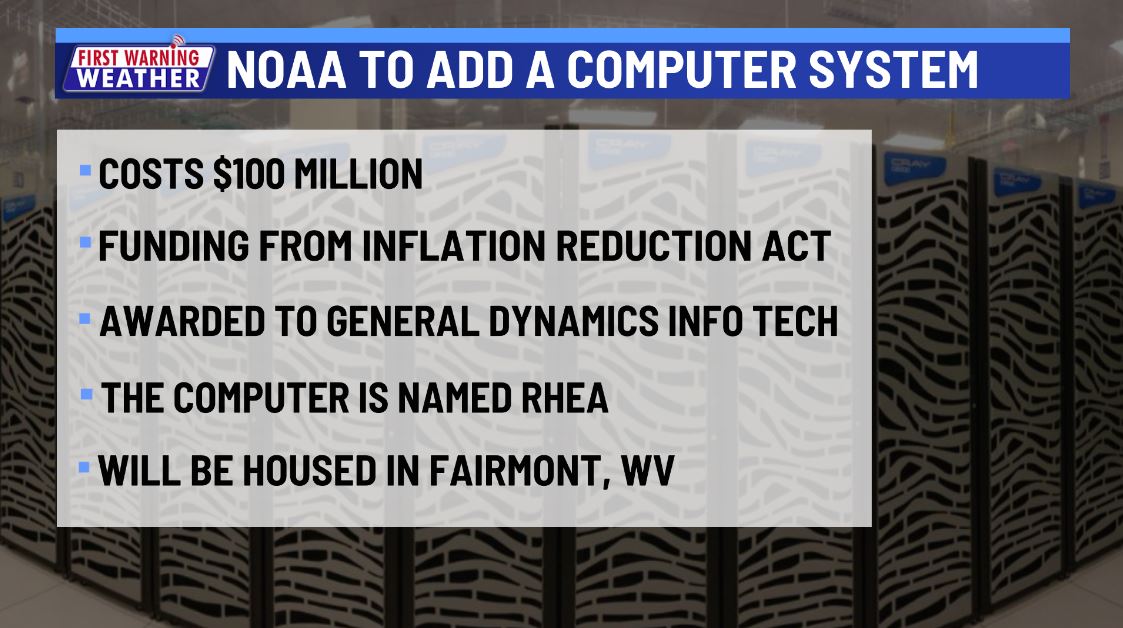AUSTIN (KXAN) — An investment of $100 million in a new computer system will help the National Oceanic and Atmospheric Administration (NOAA) with critical research of the weather, climate, ocean, and ecosystem.
The Department of Commerce and NOAA jointly announced this funding from the Inflation Reduction Act is awarded to General Dynamics Information Technology.
This newest high-performance computer will be named Rhea. In Greek mythology, Rhea was a Titaness. Rhea will become part of a modular computer data center at NOAA’s Environmental Security Computing Center in Fairmont, WV.
Rhea will assist NOAA by fortifying the way it applies artificial intelligence and machine learning capabilities. This, according to Dr. Michael Morgan, Assistant Secretary of Commerce, will improve forecasting modeling of climate, ecosystem, ocean, and weather, all critical categories in a warming climate.
More than that, per Dr. Morgan, is that Rhea adds “needed computing capacity for NOAA to expand critical research that supports the nation’s climate resilience.”
Just as important given these times of extremes in our climate is the computers helping to improve the use of satellite observations of Earth to help to better understand climate change.
The new computer will speed up NOAA’s monitoring of weather forecasts, as well as marine life species. More than that, the use of artificial intelligence and machine learning will assist with specific happenings on Earth including atmospheric rivers, fire and wildfire weather, and why hurricanes seem to get more intense. This will help in model development to make it easier for forecasters to predict droughts, floods and wildfires.
Note: Atmospheric river is a term used to describe a narrow band of water vapor sending moisture across Earth’s atmosphere. They are occasionally seen when bands of this water vapor are transported from Hawaii eastward through the Pacific to California. They can be responsible for widespread flooding.

Rhea will be connected to the current high-performance computer (named Hera). Ultimately there will be more of these additional modular data centers that allow for even more information to be gleaned.
The computing speed is incredible. A petaflop is 1,000 trillion (or one quadrillion) calculations per second. Rhea will add eight petaflops of this speed to NOAA’s research and development capacity. These eight petaflops will bring the total HPC capacity to 43.

The current R&D HPC is being credited for helping NOAA improve its weather forecasting as well as climate predictions. That improvement shows up with better and more efficient warning times for hurricanes, tornadoes, and tsunamis.
Researchers can then understand our changing climate by garnering more information from Rhea.
NOAA’s Research and Development High-Performance Computing System will grow with the addition of Rhea. There are four other R&D HPC sites with the others located in Boulder, CO, Starkville, MS (Mississippi State University), Princeton, NJ, and Oak Ridge, TN.
